The hunting code of ethics is the morality within the art of hunting
Ingrid Gerstl, ∗ 1962
curriculum venatoris
Table of contents:
- P1.1curriculum atque vita
- P1.2The biotope
- P1.3The hunt
- P1.4The hunting ground
- P1.5My adequate publications
P1.1 curriculum atque vita
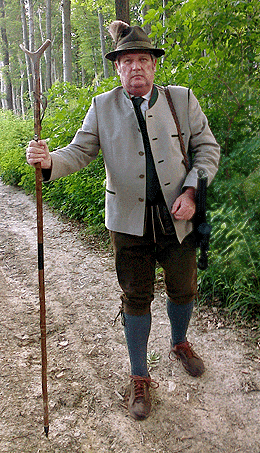 |
huntsmangame keeperformerly chase authorityformerly chase lordbiotope protectornature user | ||
| 1983 |  | diploma of the chase examination for Lower Austria; Vienna, A. | |
| 1984 |  | first invitation for a chase after water fowl in the Seewinkel. | |
| 23.10.1993-19.10.1995 |  | guest hunter at shootings of beasts of the warren in the Weinviertel. | |
| 1994 |  | sub hunter in a mountain hunting ground in the valley of Piesting. | |
| 03.09.1994 |  | my primary hunting down beasts of venery, a one-year-old roe buck, the pullus capreaginus primus, at Pernitz/NÖ. | |
| 2000-2001 |  | shooter of beasts of venery in a hunting ground in the Vienna Woods. | |
| 14.07.2000 |  | my primary hunting down of a wild boar, the sus prima, in the Vienna Woods-hunting-ground. | |
| 2001 |  | official notification of the accreditation as skillful person (formerly: assistent) for game meet inspection, erstwhile known as haruspices. | |
| 2002-2010 |  | first chase period as a chase lord in my own Vienna Woods-hunting-ground. |
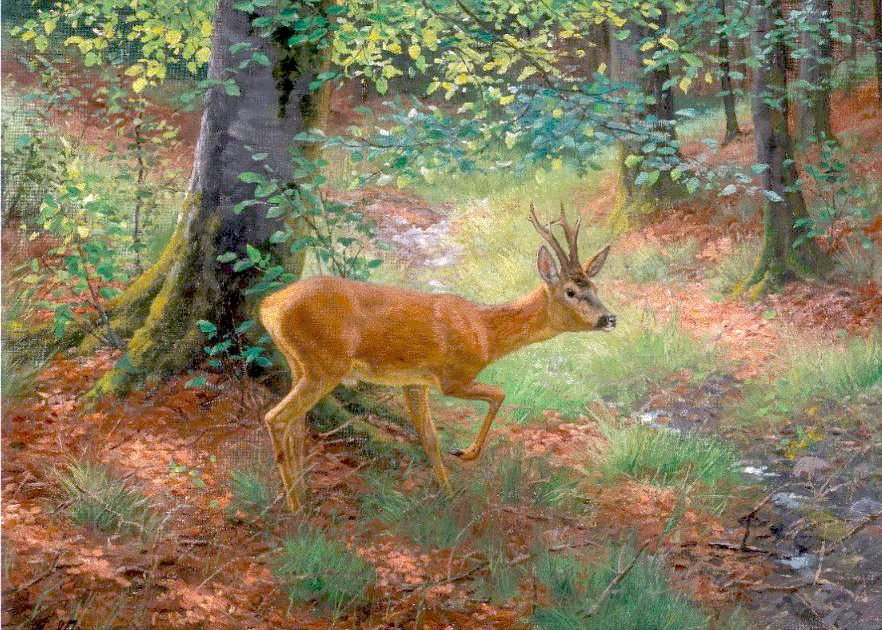
Fig. 2: My Lady best one.© A. Hassl |
| 2003 |  | exceptional hunting down beasts of venery, a roebuck with 123.3 CIC points (silver medal) in my own Vienna Woods-hunting-ground. | |
| 2007 |  | graduation in the advanced course for an accreditation as Lower Austrian game keeper. | |
| 30.07.2007 |  | investiture as a public guard (gamekeeper). | |
| 2009 |  | exceptional hunting down beasts of venery, a roebuck with 113.9 CIC points (bronze medal) in my own Vienna Woods-hunting-ground. | |
| 2011-2019 |  | second chase period as a chase lord in my own Vienna Woods-hunting-ground. | |
| 2015 |  | awarding of the Hunting Decoration of Honour in bronze. | |
| 2019 |  | matrimonial cession of the exceptional hunting down beasts of venery, a roebuck with 118.3 CIC points (silver medal) in my own Vienna Woods-hunting-ground. | |
| 2020- |  | authorization for unattended hunting in the same Vienna Woods-hunting ground. | |
| 2025 |  | awarding of the Hunting Decoration of Honour in silver. | |
P1.2 The biotope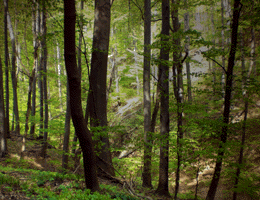
Fig. 2: Vienna Woods . . . 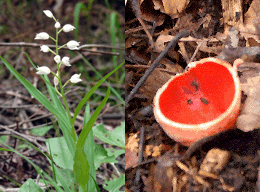
Fig. 3: . . . and its denizens 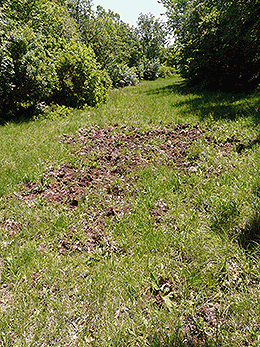
Fig. 4: The deterioration by wild boars |
The biotope within I am hunting and which is supervised by me as a game keeper is a part of the northeastern Vienna Woods. It is an economic forest on flysch consisting of beeches (Fagus sylvatica L.), oaks (Quercus robur L., and Q. petraea (Mattuschka) Liebl), Sycamore Maples (Acer pseudoplatanus L.) and ashes (Fraxinus excelsior L.) soaring 754 to 1525 feet above sea level. This type of forest (Fagion sylvaticae) corresponds more or less to the vegetation on the hillsides, that would arise if the forest is not cared for silviculturally. The shallow stream valleys are now drained and populated, the impenetrable early medieval Alder carr was the last known natural vegetation there. However, commercially inferior tree species are regularly removed for forestry reasons still, although the intensity of the influence of forestry decreases noticeably. Non-commercial wood makers usually process more degraded tree logs. Essentially, the biotope is determined by the Atlantic transitional climate. The ditches cut deep in the loose soil, pools are only temporarily present, light and soil moisture depends on the orientation of the mountain slope. Some rare and spectacular species are found regularly in this type of forest, eg the Sword-leaved Helleborine (Cephalanthera longifolia (L.) Fritsch) or the Scarlet Elf Cup (Sacroscypha coccinea (Jacq.) Boudier), both shown to the left side. With the elimination of the large herbivores from the biotope such as the Tarpan (Equus ferus Boddaert, 1785), the aurochs (Bos primigenius Bojanus, 1827), the wisent (Bison bonasus Linnaeus, 1758), and deer (Cervus elaphus Linnaeus, 1758), also the at the top of the food chain standing predators disappeared such as wolves (Canis lupus Linnaeus, 1758), brown bear (Ursus arctos Linnaeus, 1758), lynxes (Lynx lynx (Linnaeus, 1758)) and the big birds of prey. At the same time the food supply for omnivores as the wild boar (Sus scrofa Linnaeus, 1758 and for culture-following herbivores as the roe deer (Capreolus capreolus (Linnaeus, 1758)) greatly increased in the managed forests by agricultural activities. In the middle ages and the early modern period it was siphoned off through the domestic pigs grazing in the woods and a quite often largely unlimited hunting; today, however, without a reducing hunting the stocks of wild boar and of the roe deer, the latter only surviving in farmed forests, would increase to peaks that are threatening the forests. As a secondary effect of the further processing of the numerous cadavers of harrowingly famished animals, the populations of scavengers from the vertebrate group, like the fox (Vulpes vulpes (Linnaeus, 1758)), the Norwegian rat (Rattus norvegicus (Berkenhout, 1769)), the badger (Meles meles (Linnaeus, 1758)), and crows (Corvus spp.), will rise sharply, A substantial problem would come to light by the natural population-height-restriction caused by diseases, some of them (life-)threatening to all the people exposed inside the forest, all nature users, such as rabies, the fox tapeworm infection, and the tularaemia. Therefore: a controlled hunt replaces the missing predators, it is applied habitat protection in terms of all nature users. Currently the following species of huntable game are found in the representational area: as the main game the roe deer, as the wildlife of the future the wild boar, in addition the European hare Lepus europaeus Pallas 1778, the Red Fox, the Badger, the European pine marten Martes martes (Linnaeus, 1758) and the white breasted marten Martes foina (Erxleben, 1777) and the Common Wood Pigeon Columba palumbus Linnaeus, 1758. Members of other huntable species are either protected all year round, or their meat is uneatable, or carcasses do not otherwise lead to a benefit, - reasons, why I do not shoot such animals in principle. | ||
P1.3 The hunt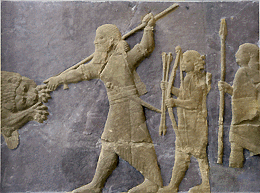
Fig. 5: The hunt: a Royal obligation for protection of people and herds 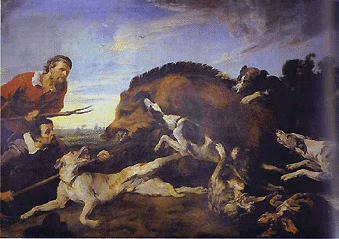
Fig. 6: The hunt: a life-threatening hunting drudgery 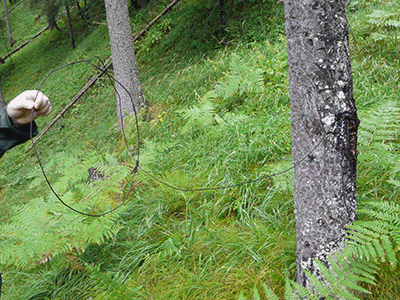
Fig. 7: Poaching: Not extinct |
The core essence of each hunt is the extraction of meat to be eaten by humans and the protection of people and livestock against dangerous animals. Hunting thus belongs to the oldest conscious social activities of people, without it recent man would never have become Homo sapiens due to a lack of vital challenges and of any pressure for cooperation. Early nobilis is committed to protecting its people against wild animals and enemies. By the end of the Roman Empire, each free denizen was authorized to kill wild animals for his benefit and to acquire the carcasses. The wood was a res nullius, a place to be cultivated by agriculture. The early Middle Ages led to the separation of the farmers, bound to his clod, with an increasingly restricted hunting right on small game only and the obligation of an extermination of harmful and dangerous animals, and of the nobility, which all to often indispensably needed the hunting of large animals for their food supply. Thus, also the forms of hunting and their durable means parted: sticks, slings and dung forks for obliteration of edible crop pests and devastating male wild boars against chamois bars and arbalests for a save killing of beasts. The noticeably improving conditions for the recovery of rent made the hunt more and more obsolete as an indispensable food production, the dubious pleasure of killing now largely harmless creatures as an amusing aristocratic pastime gained the upper hand. The increasing self-confidence of the citizens first, lateron of the farmers left no room for an aristocratic pastime at their expenses. Initiated by the indigenous bourgeois revolution of 1848 it was the Imperial patent from March 7th, 1849 which abolished all hunting rights on unfenced, foreign land and all hunting drudgery, and which brought civil hunting access rules. The hunt was assigned to the landowners in the forms of a private hunting estate and a community hunting. The result was a separation in an elitist, customs-generating Lords chase and a plebeian farmers shooting, acting up till today. This destroyed the millennial traditions of hunting culture and persistence and a social transformation was undertaken at the expense of biodiversity and cultural assets. The 1938 enforced German Reich Hunting Law 1934 codified a strict organization of the hunt and the installation of a corporation of public law, the "Reich Federation Deutsche Jägerschaft", with compulsory membership of all hunters. Today's Austrian hunting combines these elements through a Federal point of view, since the Constitution of 1920 has allocated hunting and animal welfare into the countries' competences. On January 30th 1947, the first Lower Austrian hunting law was passed by the State legislature, currently the Lower Austrian Hunting Act 1974 is applicable. So, of an autochthonous, seamlessly grown hunting with some community-building traditions worth to be protected cannot be spoken in Lower Austria - and distance should as soon as possible be taken in any case from the alien, in parts freely invented "Hunter customs", dating from the National Socialist era. Poaching is seen today as an archaic remnant of a bygone era and is often romanticized positively. This is in line with the modish trend of stylizing past imperfections as socially justified uprisings against oppressive rulers. However, poaching is nothing more than ruthless and self-serving plundering of natural resources and repulsive animal cruelty. Poaching has existed in our lands since Emperor Charlemagne exclusively assigned a few lands to the nobles as the basis for the food production of animal origin for their own use. This gave rise to sovereign sovereignty and the violation of this was an interference with sovereign rights. The transition of the hunting license to the bourgeoisie in 1848 forced the introduction of bourgeois hunting rights, hunting prey was valued mainly according to its commercial value. A violation of hunting law was equivalent to theft, perhaps justifiable. Today poaching no longer focuses on the deprivation of the rich, but on the immeasurable cruelty to animals that the snares, traps and small-caliber firearms inflict on the animals. Poaching with wire loops is not limited to East Asian tigers, as commercials make us believe, but - as can be seen in the picture on the left - still takes place on our doorstep. | ||
P1.4 The hunting ground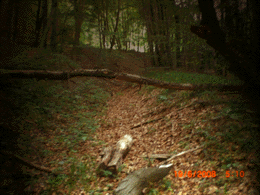
Fig. 8: A Roman via ferrata |
In Austria, hunting is provided with the constraint of managing, organized according to the system of the hunting areas, the hunting grounds, and inextricably tied to the land. In other words, the owner of unspoilt land must shoot an usually prescribed number of huntable game on his land. He can transfer this task to someone else, who hunts the game on the land as hired professional hunter or as an independent game tenant. Hunting is regulated by the hunting laws which fall within the competencies of the states in the federal Austrian republic; thus in Lower Austria the NÖ Landesjagdgesetz 1974 is applicable. The amount of the prescribed firing depends on the damage certain wildlife animals wreak locally in the managed forest or on agricultural crops. The hunting ground system thus protects the local farmers and foresters from threatening damages to their means of production and fruit, the game owner must replace the damages. As a tenant one is usually aware of the importance of nature monuments, rare animal and plant species, and other features, which are to be found within the own hunting ground. Here as a proof You can see an example of a well-documented trade route from Roman times, today it has become overgrown and it is abused by clueless as a dog defecation place. | ||
P1.5 My adequate publications
- Edelhofer R, Heppe-Winger E-M, Hassl A, Aspöck H [1989]: Toxoplasma-Infektionen bei jagdbaren Wildtieren in Österreich. Mitt Österr Ges Tropenmed Parasitol 11: 119-123.
- Hassl A, Kaltenberger A, Risy R [2009]: Die Befehdung des Gritsch: Feldhamsterfang im spätmittelalterlichen St. Pölten. Sant Ypoelten Stift und Stadt im Mittelalter 243-6.
- Kaltenberger A, Hassl A, Risy R [2010]: Zweckentfremdet: Die Kanne als Falle - Feldhamsterfang in St. Pölten, NÖ. In: Arbeitskreis für Keramikforschung: Keramische Begegnungen: Sachsen-Schlesien-Böhmen 175-84.
 Andreas R. Hassl
Andreas R. Hassl